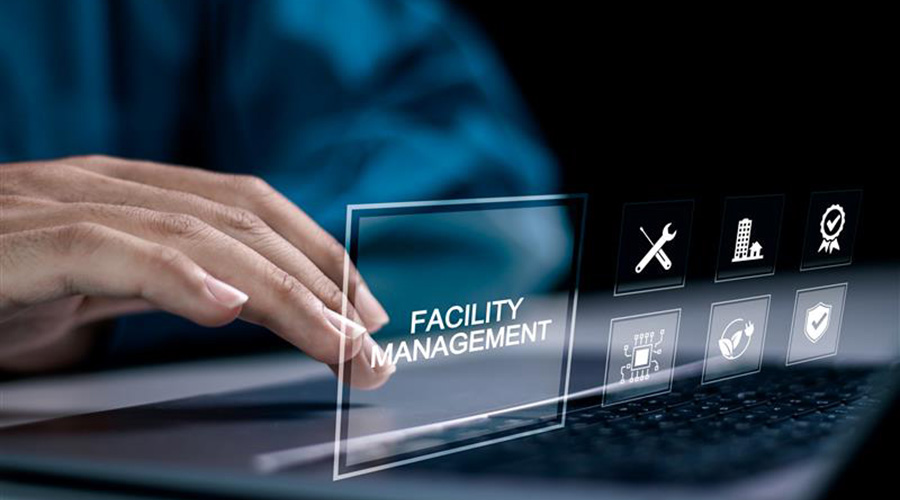The Case for Centralizing Maintenance Activities
For managers who can successfully centralize their facilities’ maintenance and engineering activities, the benefits do not stop there.
By Darrell X. Rounds, contributing writer
Effective maintenance and engineering activities are critical to the success of any institutional or commercial organization because they minimize operational costs, enhance efficiency and improve the overall quality of the work environment. Many organizations have centralized the management, operation and maintenance of facilities, equipment and properties to streamline operations, improve coordination and maximize the value of facilities.
For managers who can successfully centralize their facilities’ maintenance and engineering activities, the benefits do not stop there.
Cost considerations
The first and most obvious benefit of centralizing maintenance and engineering activities is cost savings. When these activities are decentralized, standardization is lacking. The departments and teams that comprise an organization might be duplicating efforts or contracting with different vendors, resulting in higher costs.
A centralized team can streamline processes and negotiate better rates with vendors, resulting in cost savings. Managers can obtain cost savings from centralized activities through lean concepts, such as waste elimination, efficiency improvement and standardization. By standardizing policies and procedures, businesses and organizations can identify and eliminate inefficiencies, redundancies and waste. This approach also can help to optimize equipment, space and personnel.
For example, a centralized department can identify and prioritize maintenance activities based on the criticality of assets and the availability of resources, which can help to reduce downtime and minimize costs. Centralizing these activities also can facilitate the implementation of technology solutions, such as a computerized maintenance management system (CMMS), which can improve the accuracy and efficiency of maintenance processes.
Centralization also promotes standardization, which in turn promotes consistency. Decentralized activities cause each site or location to have its unique approach to managing and maintaining assets — an approach that can result in inconsistencies in the quality of services and maintenance practices, as well as increased costs and inefficiencies and reduced productivity. It also can lead to inconsistencies in maintenance, repairs and upgrades, creating higher costs and reduced efficiency.
Centralizing maintenance and engineering activities also allows managers to develop standardized policies and procedures and apply them across all facilities. This approach ensures facilities are managed and maintained consistently and efficiently, which can enhance operational performance and cost savings and ensure all facilities are maintained to the same high standard.
Beyond the bottom line
While cost considerations often dominate discussions of centralizing maintenance and engineering activities, the potential benefits of this approach can go far beyond the bottom line.
Resource coordination. Centralizing these activities also can help managers coordinate resources. When activities are decentralized, each department or location is more likely to have its own staff, and the result can be duplicate efforts and inefficient use of resources. By centralizing activities, managers can better coordinate the deployment of staff and equipment.
Technology. Centralized activities help organizations leverage technology in ways that improve service delivery. When maintenance and engineering activities are decentralized, each department or location might develop its own technology, resulting in a patchwork of systems that are not integrated and might not be able to communicate with each other.
But if activities are centralized, organizations can invest in technology that is designed for collaboration and can be used across the organization. In this scenario, a centralized view of the data from building automation systems and CMMS can help teams respond to issues more effectively, leading to better data management, improved analytics and more effective decision making.
Communication. Managers looking for improved communication and coordination among departments and teams can consider centralizing activities. Decentralized departments might not be aware of what other departments are doing, resulting in inefficiencies and potentially conflicting efforts.
A centralized approach can ensure that all departments are aware of each other's activities and coordinate their efforts to ensure all activities align with the organization's goals. Managers also can leverage best practices and lessons learned across the organization’s portfolio, reinforcing standardization and bringing consistency to service delivery.
Centralizing activities promotes collaboration among different departments and stakeholders. Facilities are often managed by different departments, such as operations, finance and human resources, which can create silos and communication gaps. By centralizing activities, managers can create a structure or team that serves as a liaison among departments and stakeholders. This approach fosters collaboration, communication and transparency, and it helps managers improve decision making, reduce conflicts and improve outcomes.
Asset management. Facilities are often an organization’s most significant assets, so their effective management is critical to ensure they remain in optimal condition and operate efficiently. A centralized maintenance and engineering team can develop and implement a comprehensive asset management strategy that ensures all assets are properly maintained and upgraded as needed.
Most organizations have limited resources, and centralization allows them to evaluate the needs for their entire portfolio and establish and implement plans that ensure assets have the greatest impact. Under a decentralized approach, each unit has to make the case for investment, and the process for funding asset management can become arduous, emotional and inefficient. Centralization takes the emotion and subjectivity out of the process.
Data management. Centralization supports better data collection and analysis. When facility management activities are decentralized, different departments might use different systems to track data, making it challenging to analyze and make informed decisions. A centralized facility management team can implement a standardized system for data collection and analysis, allowing for better insights into facility management operations and making it easier to identify areas for improvement.
Emergency response. Centralization improves the organization's ability to respond to emergencies. When activities are decentralized, different departments might not be aware of what others are doing, making it challenging to respond quickly and effectively to emergencies. A centralized team can ensure that all departments are aware of emergency procedures and can coordinate efforts to respond quickly and effectively.
Strategic planning. Centralization also allows for better strategic planning. When facility management activities are decentralized, different departments may be working on their own projects without considering the bigger picture. A centralized facility management team can develop a comprehensive facility management plan that aligns with the organization's goals and objectives, ensuring that all facility management activities are working towards a common purpose.
Work environment. A key byproduct of centralizing maintenance and engineering activities is the enhanced quality of the work environment and the satisfaction of employees and stakeholders. Facilities play a critical role in creating a safe, comfortable and productive work environment, so when facilities are well-maintained and managed, employees are more likely to be satisfied, productive and engaged.
By centralizing activities, managers can ensure facilities are regularly inspected, maintained and repaired, which can prevent accidents, reduce downtime and improve the overall quality of the work environment. This approach also can address concerns raised by employees and stakeholders, such as lighting, temperature and cleanliness, and contribute to their satisfaction and well-being.
Challenges and solutions
Centralizing maintenance and engineering activities can pose challenges for managers and their departments. One of the main challenges is the need for a centralized structure and leadership to oversee and coordinate these activities across different facilities.
This effort might require significant investment in human resources, technology and infrastructure, which can be a barrier for small or decentralized organizations. Centralizing these activities also might require changes in the organizational culture, processes and policies, which can be met with resistance from employees.
To overcome these challenges, managers need to develop a comprehensive strategy that considers the specific needs and constraints of their operations. Although there might be many details in implementing such a strategy, it should involve these steps:
- Conduct a needs assessment. Managers should conduct a thorough assessment of their facilities and assets to identify maintenance and engineering needs.
- Set requirements backed by metrics. What are the standards regarding maintenance and engineering for the organization? Examples might include a goal of having 100 percent of all safety-related preventive maintenance tasks completed monthly, housekeeping audits conducted monthly with a score of 90 percent or better and stakeholder satisfaction scores of 90 percent better. The system should include a mechanism to institute and act on countermeasures when locations fall short of metrics.
- Establish a performance scorecard. The scorecard lays out what the elements of success look like, and it should track performance on established initiatives and metrics, and managers should review it regularly.
- Track performance across facilities. The strategy can ensure that sites and locations are meeting the requirements and assist in coaching the sites to success.
Many benefits exist for managers who centralize their maintenance and engineering activities, including cost savings, consistency in delivering services, improved communication, better data collection and analysis and improved risk management. Success will depend on their ability to gather the needed resources, foster buy-in among the interested parties and implement a strategy that addresses consistent long-term performance.
Darrell X. Rounds is senior manager of global workplace risk mitigation with General Motors Co. and a 25-year veteran in the company’s facilities management space. He works in GM’s global workplace safety organization focusing on contractor safety and product launch safety. He earned the designation of Facilities Management Administrator (FMA) from BOMI International and is a Certified Energy Manager (C.E.M.) with the Association of Energy Engineers.
Related Topics:












